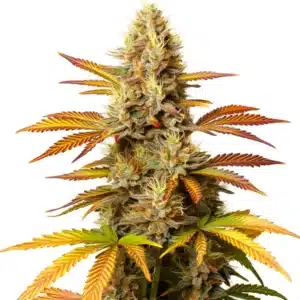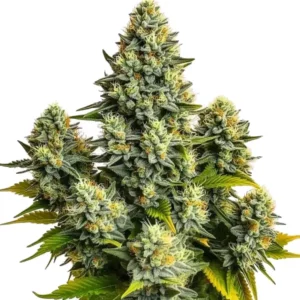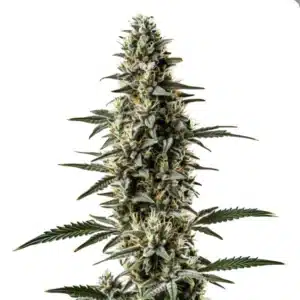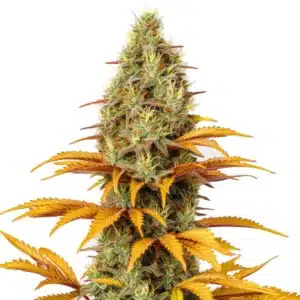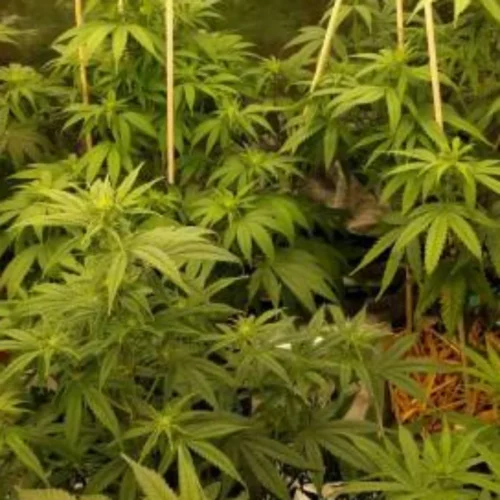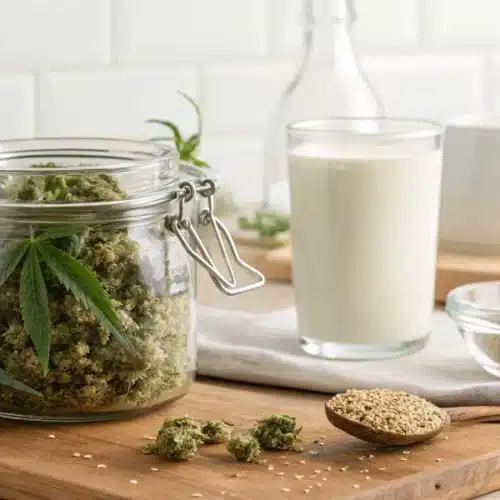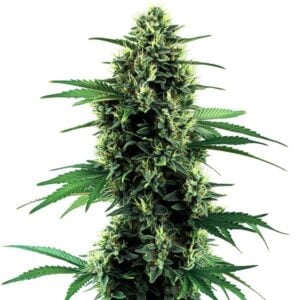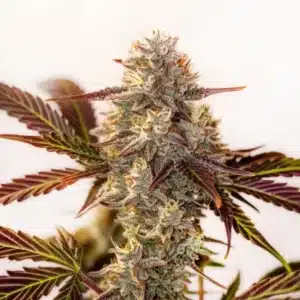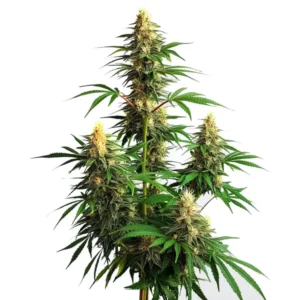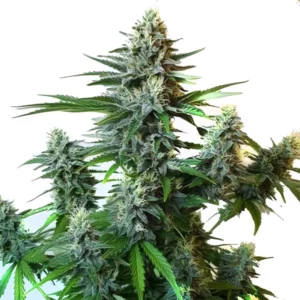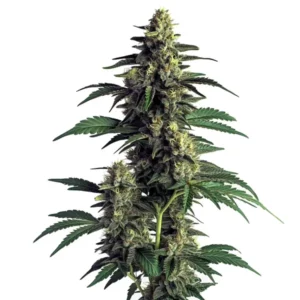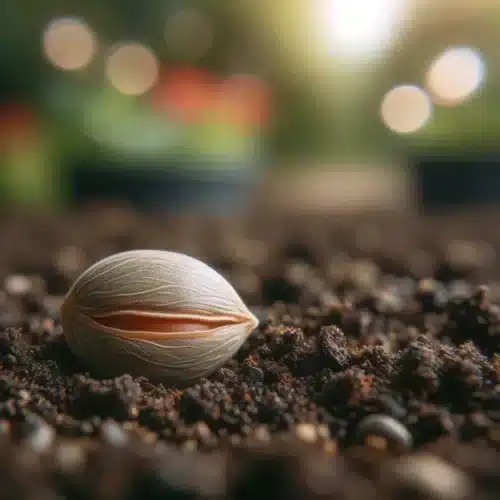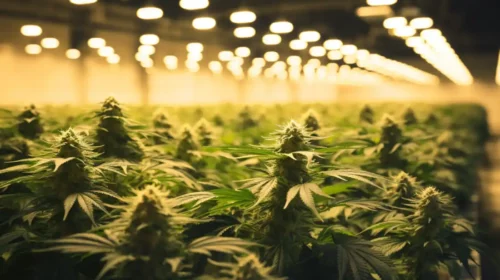Knowing Autoflowering Plants
What Are Autoflowering Plants?
Autoflowering plants are cannabis strains that transition from the vegetative stage to flowering automatically, without the need for changes in light cycles. Unlike photoperiod plants, which rely on specific light schedules, autoflowers grow based on age, making them easier to manage for growers of all experience levels. These plants typically originate from Cannabis ruderalis, a hardy subspecies native to colder climates. Their genetic makeup allows for shorter growing cycles, making them an excellent choice for those seeking quick harvests and consistent autoflowering plants yield.
Autoflowers are a favorite among cultivators due to their adaptability. Their ability to thrive in various conditions means growers don’t need to worry as much about strict environmental controls. This flexibility makes autoflowering plants yield dependably in both indoor and outdoor setups, further cementing their appeal for growers aiming for efficiency and reliability.
Benefits of Growing Autoflowers
One major benefit of autoflowering plants is their rapid growth cycle. Most strains are ready for harvest within 8-12 weeks from seed, allowing multiple harvests in a single season. Additionally, they’re small and compact, making them ideal for indoor grows or outdoor spaces with limited room. Autoflowers are also resilient to environmental stressors like temperature fluctuations and pests. Their ability to thrive in diverse conditions ensures consistent yields even in less-than-ideal settings, making them a go-to choice for both novice and expert cultivators. Autoflowering plants yield impressive results when given proper care and attention.
Autoflowers are also resilient to environmental stressors like temperature fluctuations and pests. Their ability to thrive in diverse conditions ensures consistent yields even in less-than-ideal settings, making them a go-to choice for both novice and expert cultivators.
Challenges Unique to Autoflowering Strains
Despite their advantages, autoflowering plants can be challenging for growers who are used to manipulating light schedules. Since they flower automatically, there’s limited room for error in the early stages of growth. Any stress, such as overwatering or nutrient imbalances, can impact overall yield.
Additionally, their smaller size may result in lower yields per plant compared to photoperiod strains. However, with proper care and the right techniques, autoflowering plants yield can be optimized for maximum production.
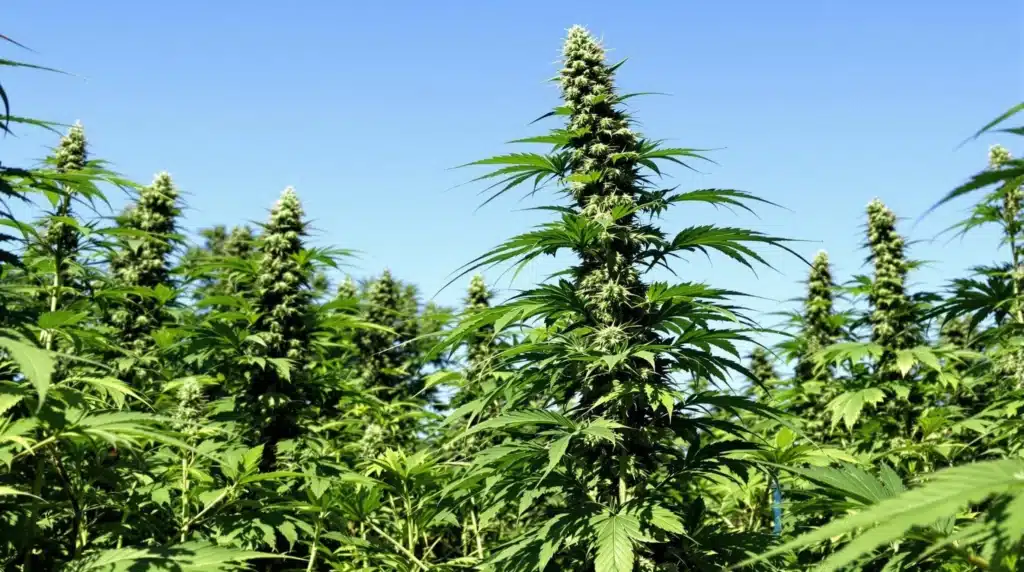
Promos & Deals
Factors That Affect Autoflowering Plants Yield
Genetic Potential of the Strain
The genetic makeup of an autoflowering strain plays a crucial role in determining its yield. Strains like Gorilla Glue Auto and Northern Lights Auto are known for their high-yielding potential. When selecting seeds, choose strains bred specifically for robust production and resin-rich buds.
Superior genetics often include enhanced terpene profiles and cannabinoid potency. These traits not only contribute to higher yields but also improve the overall quality of the harvest. By investing in reputable seed banks and selecting strains with proven track records, growers can confidently achieve exceptional autoflowering plants yield while ensuring flavorful and potent buds.
Lighting Requirements for Optimal Growth
Autoflowers perform best under 18-24 hours of light per day during their entire lifecycle. High-quality LED or HPS grow lights provide the full spectrum needed for healthy growth and bud development. Adequate lighting ensures plants reach their maximum potential, directly impacting autoflowering plants yield. Outdoor growers should plant in locations that receive ample sunlight throughout the day. The more consistent and intense the light, the better the results.
Lighting quality is equally crucial as duration. Full-spectrum lights mimic natural sunlight, promoting robust growth and resin production. For indoor growers, maintaining the right distance between lights and plants prevents light burn while optimizing photosynthesis. Effective lighting strategies are integral to achieving remarkable autoflowering plants yield in both controlled and natural environments.
Importance of Nutrient Management
Autoflowers have a shorter lifecycle, making nutrient management critical. During the vegetative stage, they require nitrogen-rich fertilizers to support foliage growth. As they transition to flowering, phosphorus and potassium become essential for bud production.
In addition to macronutrients, micronutrients like calcium, magnesium, and sulfur play vital roles in overall plant health. Ensuring a well-rounded feeding schedule prevents common issues like yellowing leaves or stunted growth. Tailoring nutrient regimens to the specific needs of your strain is key to unlocking the full potential of autoflowering plants yield.
Impact of Growing Mediums on Yields
The choice of growing medium, soil, coco coir, or hydroponics, can significantly influence yield. Soil is user-friendly and provides natural nutrients, while coco coir offers better aeration and faster growth. Hydroponic systems deliver nutrients directly to the roots, resulting in higher yields but requiring more technical expertise. Selecting the right medium depends on your experience level and the resources available. Each option has its benefits and challenges, but all can support impressive autoflowering plants yield with proper care.
Techniques to Maximize Autoflowering Plants Yield
Low-Stress Training (LST)
LST involves gently bending and tying branches to create an even canopy. This technique ensures all parts of the plant receive equal light exposure, boosting bud development. LST is particularly effective for autoflowers, as it doesn’t cause significant stress that could stunt growth. By spreading out the plant’s structure, you also improve airflow, reducing the risk of mold and pests. Regularly adjust ties as the plant grows to maintain optimal shape and light distribution, ensuring impressive autoflowering plants yield.
The versatility of LST makes it suitable for both small-scale and large-scale grows. It encourages the development of multiple bud sites, increasing overall yield potential. For growers seeking to maximize limited space, LST is an invaluable technique that consistently enhances autoflowering plants yield without compromising plant health.
Proper Pruning and Defoliation
Pruning involves removing unnecessary foliage to redirect the plant’s energy toward bud production. Defoliation, or trimming leaves, enhances light penetration and airflow within the canopy. For autoflowers, focus on removing large fan leaves that block light from reaching lower bud sites.
Be cautious when pruning, as excessive removal can stress the plant. Aim for a balance that promotes healthy growth while maximizing autoflowering plants yield.
Maintaining Optimal Environmental Conditions
Temperature and humidity play vital roles in plant health and yield. During the vegetative stage, maintain temperatures between 70-85°F with humidity levels around 50-70%. In the flowering stage, reduce humidity to 40-50% to prevent mold. Ensure consistent airflow with fans and exhaust systems to maintain a stable environment. Monitoring and adjusting these conditions throughout the growth cycle ensures plants thrive and achieve maximum autoflowering plants yield.
Choosing the Right Light Cycles
While autoflowers don’t rely on light cycles to flower, providing 18-24 hours of light daily maximizes photosynthesis and growth. Indoor growers benefit from continuous lighting, while outdoor growers should plant during seasons with long daylight hours. Experiment with different light schedules to find what works best for your setup. The right balance ensures healthy growth and impressive autoflowering plants yield.
Best Practices for Growing High-Yield Autoflowers
Selecting High-Yield Autoflower Strains
Strains like Gorilla Glue Auto, Northern Lights Auto, and Amnesia Haze Auto are renowned for their high yields. Research seed banks and reviews to select strains that align with your goals and growing conditions. High-yield strains often require specific care, so follow guidelines for each variety to achieve optimal results. Investing in quality genetics is the first step toward achieving outstanding autoflowering plants yield.
Understanding the growth characteristics of each strain allows you to tailor your cultivation methods. High-yield strains often have unique nutrient and environmental needs. By meeting these requirements, growers can unlock their full potential and consistently achieve exceptional autoflowering plants yield.
Importance of Proper Spacing and Airflow
Overcrowded plants compete for light and nutrients, reducing yield. Provide adequate spacing between plants to ensure they receive sufficient light and airflow. This setup minimizes the risk of pests and diseases, promoting healthy growth.
Regularly inspect plants for signs of overcrowding and adjust as needed. Proper spacing supports larger, more resinous buds, maximizing autoflowering plants yield.
Timing Nutrient Feedings Effectively
Autoflowers have a condensed lifecycle, making timely nutrient feedings essential. Feed plants according to their growth stage, transitioning from nitrogen-rich formulas during vegetative growth to phosphorus-heavy nutrients during flowering.
Avoid overfeeding by starting with lower concentrations and increasing gradually. Monitoring plant health ensures they receive the nutrients needed for robust yields.
Top High-Yield Autoflower Strains
Gorilla Glue Auto F1: A Resilient and Potent Strain
Gorilla Glue Auto F1 is celebrated for its resilience and heavy yields. This strain thrives in various environments and produces dense, resin-coated buds with a pungent aroma. Its balanced effects and ease of cultivation make it a favorite among growers seeking high autoflowering plants yield. With proper care, Gorilla Glue Auto F1 delivers impressive harvests.
Northern Lights Auto: Classic High Yields
Northern Lights Auto is a legendary strain known for its high yields and relaxing effects. Its compact size makes it suitable for indoor grows, while its robustness ensures success outdoors. This strain is easy to grow and offers a sweet, earthy flavor profile. It’s a top choice for beginners and experienced growers alike.
Watermelon Zkittlez Auto: Sweet Flavors and Large Harvests
Watermelon Zkittlez Auto combines sweet, fruity flavors with exceptional yields. Its vibrant buds are a testament to its quality genetics, and it’s suitable for both indoor and outdoor cultivation. With minimal maintenance, Watermelon Zkittlez Auto rewards growers with abundant harvests of flavorful buds. This strain is perfect for those seeking a balance between taste and production.
Amnesia Haze Auto: Reliable Yields with Energizing Effects
Amnesia Haze Auto is known for its uplifting effects and consistent yields. This strain requires attention to detail but rewards growers with high-quality buds and a citrusy flavor profile. Its long-lasting effects and productivity make it a standout choice for autoflower enthusiasts. Proper care ensures Amnesia Haze Auto reaches its full potential.
Common Mistakes That Reduce Autoflower Yields
Overfeeding and Nutrient Burn
Excessive nutrients can cause nutrient burn, stunting plant growth and reducing yield. Monitor plants closely and adjust feedings based on their response.
Flushing the growing medium with clean water can correct nutrient imbalances. Avoid overfeeding by starting with lower concentrations and gradually increasing as needed.
Poor Light Management
Inadequate lighting limits a plant’s ability to photosynthesize, reducing growth and yield. Ensure plants receive sufficient light intensity and duration, particularly during flowering.
Investing in high-quality grow lights and positioning them correctly maximizes autoflowering plants yield. Regularly check light levels to ensure plants are thriving.
Ignoring pH Levels
Improper pH levels in soil or water can hinder nutrient absorption, leading to deficiencies. Maintain a pH range of 6.0-7.0 for soil and 5.5-6.5 for hydroponic systems.
Test pH levels regularly and use pH adjusters to maintain optimal conditions. Proper pH management ensures plants receive the nutrients needed for healthy growth.
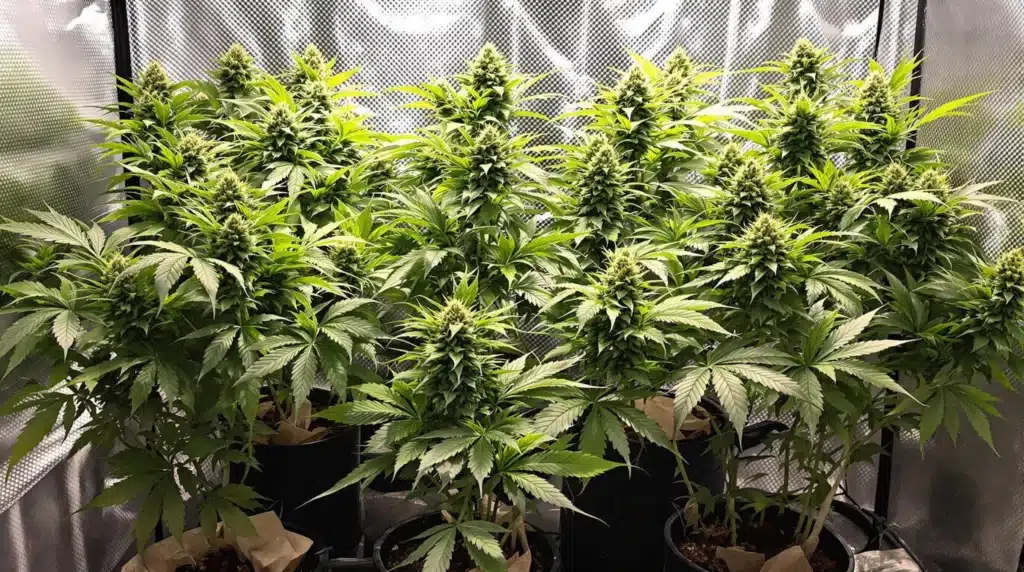
FAQs About Autoflowering Plants Yield
Can autoflowers yield as much as photoperiod plants?
Autoflowers generally produce lower yields per plant compared to photoperiod strains due to their shorter lifecycle and compact size. However, with proper care, training techniques like LST, and high-yielding autoflower strains such as Gorilla Glue Auto, they can still produce impressive results. Growing multiple autoflowers in the same space can also compensate for individual plant yield differences.
How long does it take to achieve maximum yield from autoflowers?
Autoflowering plants typically reach harvest in 8–12 weeks from seed, depending on the strain. Maximizing yield within this short timeframe requires optimal light exposure, nutrient management, and consistent environmental conditions. Choosing a strain with a proven high-yield track record, like Northern Lights Auto, can further enhance results.
What’s the average yield per plant for autoflowers?
The average yield per autoflower plant ranges from 1.5 to 6 ounces, depending on the strain and growing conditions. Factors like lighting, nutrient availability, and proper training techniques play a significant role in achieving higher yields. Advanced growers often maximize yields by optimizing every aspect of the plant’s growth cycle.

